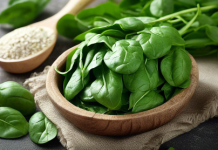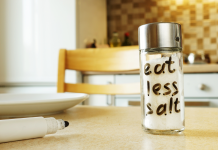High blood pressure, also known as hypertension, is a dangerous condition that increases a person’s risk of having a heart attack or stroke, two leading causes of death in Americans. This condition is very common, with nearly half of U.S. adults (or 116 million) having high blood pressure.
Thankfully, blood pressure levels aren’t set in stone, even if you’re genetically predisposed. By applying some simple lifestyle changes, you can naturally lower your blood pressure. One of those changes is eating more whole grains, such as oats and brown rice.
In this article, we’ll be exploring how eating whole grains can play an important role in lowering your blood pressure and how to incorporate this food group into your diet. First, let’s go over some basics.
Why is controlling blood pressure important?
Blood pressure is a measure of how hard your heart has to pump to deliver blood throughout your body. When you have high blood pressure, your heart and arteries have to work harder than usual. The increased force of blood flow can damage your blood vessels, making them weak, stiff, or narrow. Over time, high blood pressure can harm several important organs, including the heart, kidneys, and brain.
High blood pressure is sometimes called a “silent killer” because it generally has no warning signs, yet can lead to life-threatening conditions like heart attack and stroke.
As such, maintaining a normal blood pressure (less than 120/80 mmHg) is essential when it comes to your overall health.
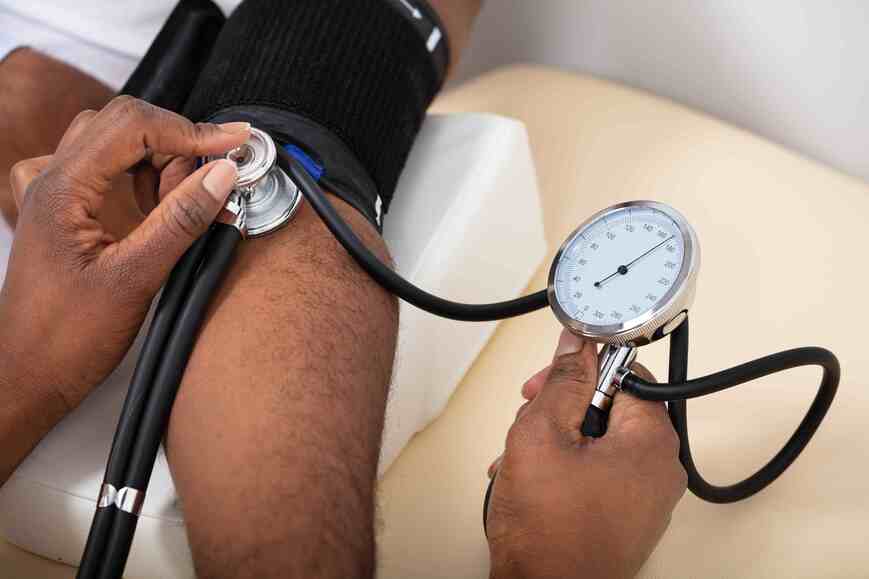
What are whole grains?
Grains are a staple food in homes around the globe. They have three parts: the bran (the nutritious outer layer), the germ (the seed’s nutrient-rich embryo), and the endosperm (the germ’s food supply).
There are two main types of grains offered in the grocery store: refined grains and whole grains. Refined grains have been milled, a process that removes the bran and germ. While milling gives grains a finer texture and longer shelf life, it also removes important nutrients, including fiber, iron, and many B vitamins. Some examples of refined grains include white flour, white rice, and white bread.
Whole grains, on the other hand, are grains that contain the entire kernel—the bran, germ, and endosperm. They’re a great source of complex carbohydrates, fiber, and many key vitamins and minerals, including magnesium, manganese, phosphorus, selenium, and B vitamins. Examples of whole grains include:
- Whole oats/oatmeal
- Whole grain bread
- Whole wheat flour
- Whole grain cereal
- Whole grain pasta
- Whole barley
- Whole corn
- Popcorn
- Spelt
- Brown rice
- Buckwheat
- Bulgur
- Millet
- Quinoa
- Sorghum
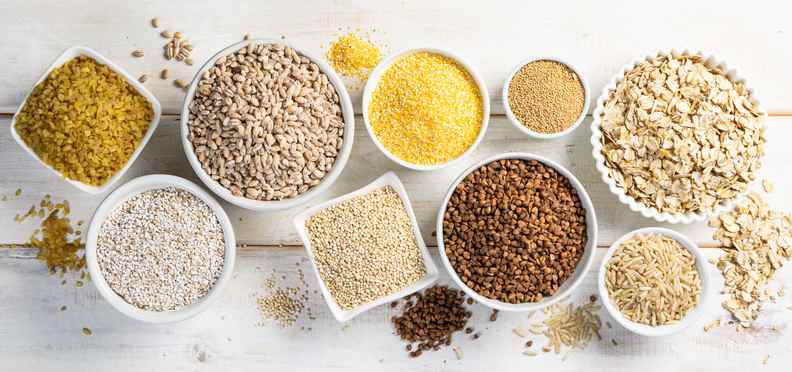
What’s the connection between whole grains and blood pressure?
Whole grains can work wonders when included as a part of a healthy, balanced diet. According to the American Heart Association, natural sources of potassium, such as whole grains, can lessen the blood pressure-raising effects of sodium. Additionally, whole grains contain plentiful fiber, vitamins, and minerals, which also play a role in reducing the risk of high blood pressure and heart disease.
One 2010 study published in the American Journal of Clinical Nutrition found that following a diet rich in whole grains is as effective as blood pressure medication. While you shouldn’t stop taking your blood pressure medication without your doctor’s consent, over time, eating a diet high in whole grains and living an overall healthy lifestyle can help you reduce or even eliminate your need for medication.
Over the years, countless other studies have also pointed to the connection between eating whole grains and lowered blood pressure, including a recent 2021 study published in The Journal of Nutrition.
How many whole grains should you consume?
So, how can you add this wonderful food to your diet? According to the Dietary Guidelines for Americans, adults should aim to eat a minimum of three ounces of whole grains per day. For reference, one ounce is equal to approximately:
- ½ cup cooked whole grain rice, pasta, or other cooked grain
- 1 slice of whole grain bread
- 1 cup of flaked whole grain cereal
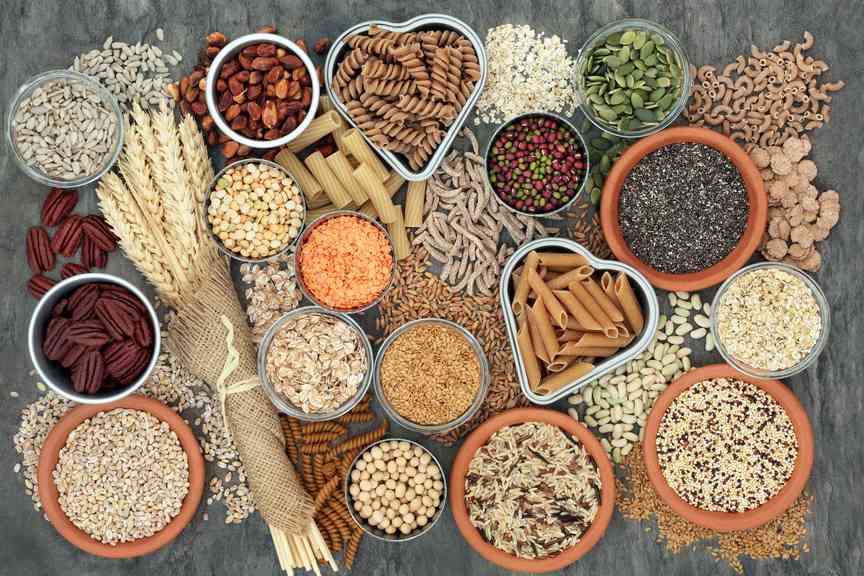
How to incorporate more whole grains into your diet
Try these tips to add more whole grains to your daily meals:
- Swap out refined grains: Look at what refined grains you’re already eating (white bread, white pasta, white rice, etc.) and replace them with the whole grain variety (whole grain bread, whole grain pasta, brown rice, etc.).
- Start your day with whole grains: For breakfast, enjoy a bowl of oatmeal topped with berries, a bowl of whole grain cereal, or pancakes made with whole wheat flour.
- Make sandwiches: Use two slices of whole grain bread to make a delicious sandwich for lunch. Add lots of veggies for an extra health boost!
- Enhance your meals: Whole grains, such as whole grain rice, barley, or quinoa, can easily be added to soups, stews, curries, salads, burritos, tacos, and Buddha bowls. They also make for a quick and easy side dish.
- Whip up some grain-filled snack bars: Snack bars are great to have on hand because you can easily grab one if you’re in a rush or need a quick pick-me-up. Steer clear of the ones in the grocery store though, as they’re typically filled with unhealthy ingredients. Instead, make your own healthy whole grain bars at home.
Take a holistic approach to health
Eating whole grains is just one healthy habit you can apply to lower your blood pressure, but it’s not a cure-all. In order to maintain a normal blood pressure and support your overall health, it’s important to:
- Exercise regularly
- Eat a healthy, balanced diet that includes fruits, veggies, whole grains, legumes, nuts, seeds, and smaller portions of lean meats and low-fat dairy (if desired).
- Reduce your sodium intake
- Drink less alcohol
- Quit smoking
- Learn to manage stress
- Maintain a healthy weight
- Reduce or cut out added sugars, processed foods, and refined carbohydrates
You can also support your overall health by taking supportive supplements, such as JointFuel360. This oral supplement combines research-backed, anti-inflammatory ingredients, including turmeric root, black pepper extract, Boswellia serrata extract, resveratrol, collagen (type II), and hyaluronic acid. These ingredients work together synergistically to improve joint comfort, mobility, and flexibility, and may even help lower blood pressure.
The bottom line
Learning you have high blood pressure can be startling, but fortunately, there are steps you can take to help lower your blood pressure naturally. One of those steps is actually pretty delicious: adding more whole grains to your healthy diet. From whole wheat pancakes to warm bowls of oatmeal to a tasty plate of whole grain pasta, supporting a healthy blood pressure has never tasted so good!
References:
https://www.mayoclinic.org/diseases-conditions/high-blood-pressure/symptoms-causes/syc-20373410
https://academic.oup.com/ajcn/article/92/4/733/4597497
https://academic.oup.com/jn/article/151/9/2790/6311830
https://cookieandkate.com/simple-vegan-pancake-recipe/
https://cookieandkate.com/buddha-bowl-recipe/


